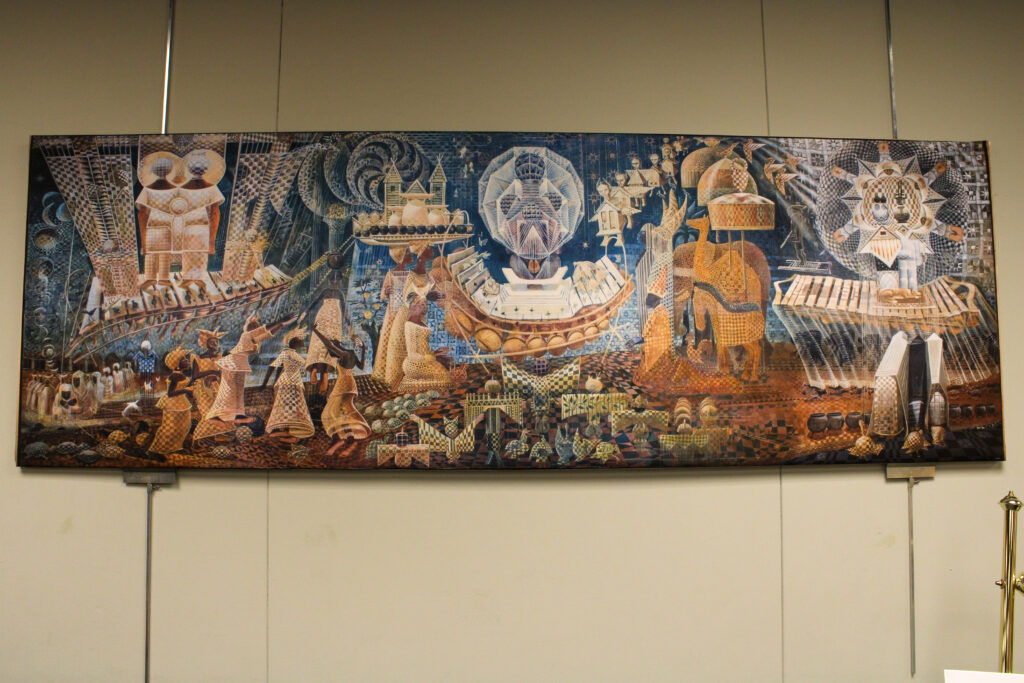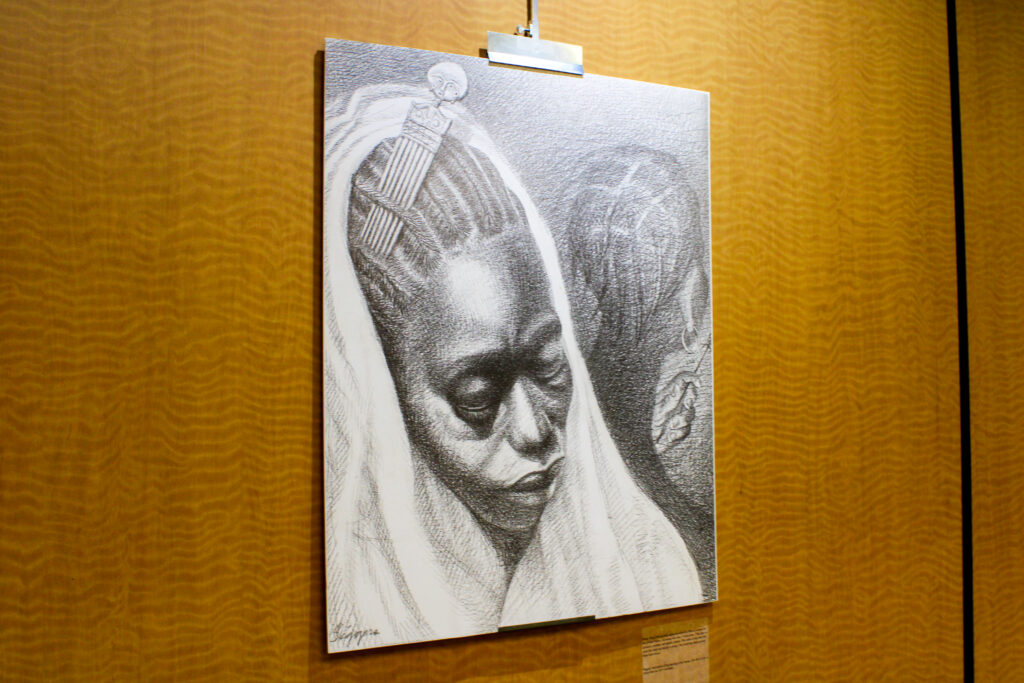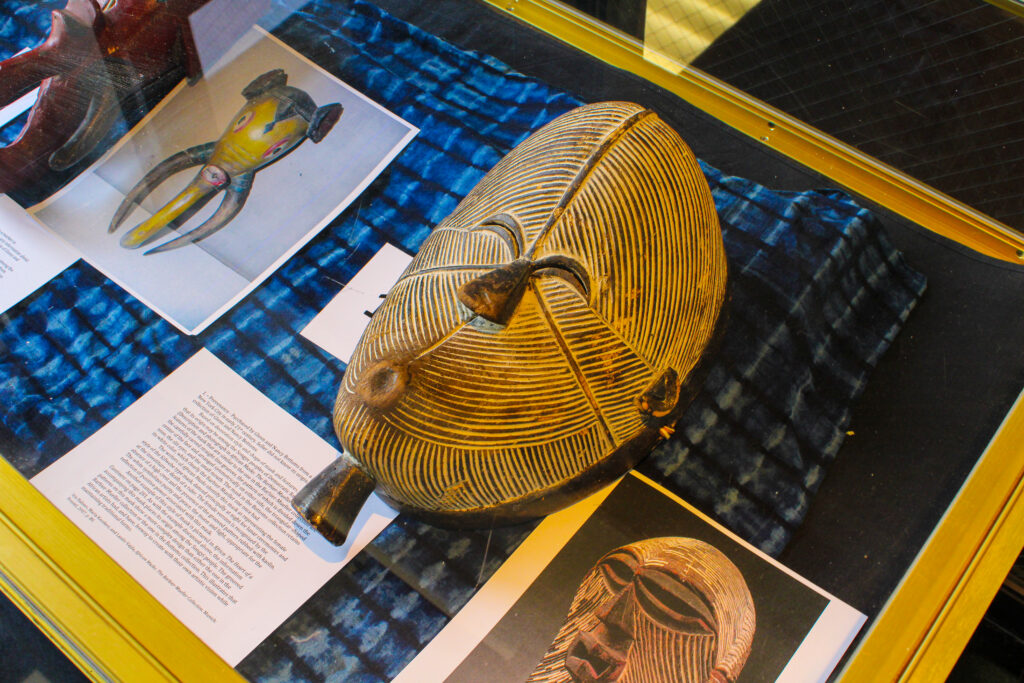
By Marianne Luedeman
BOILING SPRINGS, N.C. – In honor of Black History Month 2024, Gardner-Webb University is hosting an art exhibit commemorating the work of famed African American artist, muralist and educator John Biggers.
Originally opened on Feb. 1, the exhibit can be found on the first floor of Dover Memorial Library and will remain up for viewing until the end of February.
The exhibit features a collection of paintings, designs and sculptures created by the late artist, a Gastonia, N.C.. local who rose to prominence during the Harlem Renaissance and in the post-World War II era. Biggers’ work features depictions of African American culture, heritage, and provides commentary on the African American experience.

Lawrence Brinson, Gardner-Webb’s Director of Diversity and Inclusion, shared that Biggers’ art was highlighted because of “his iconic work at HBCUs, his work in the African American community, and his work in North Carolina.” Brinson added that “the way he shared all of these experiences through art is just fascinating” and shows the depth of the African American experience.
In selecting the Gardner-Webb events for Black History Month 2024, Brinson noted that having an art exhibit was of high importance due to the power that the visual arts have in conveying history, heritage and culture.
“You can learn a lot, you can see the captured memories of the artist, and you get to feel and see the experiences of what the artist went through and how they captured the experiences of others,” said Brinson.

Brinson further added that he wants the student body to be able to see, relate to, and learn about the African American experience through Biggers’ work. “We want to encourage students to read and participate in the arts. (We want to encourage them) to be able to look at a painting and feel a common, shared thread with the artist,” said Brinson.
The exhibit notably features work depicting different aspects of the African American experience. Lauren Washington, the Assistant Director of Diversity and Inclusion, added that this is intentional.
“(African American culture) is very unique, and everybody’s experience is equally unique. Through African American artists, you can see the variation of our experiences expressed through the arts. It’s enlightening to see, but most importantly, it’s affirming,” said Washington.

Outside of the exhibit, Brinson and Washington want to encourage students to make their visit the first step in their Black History education, not the last.
“Keep learning, don’t just stop learning after Black History Month. Dig deeper and learn about it, don’t just think about it as a visit to see a few paintings, but rather one opportunity of many to continue your education,” ended Brinson.
For questions or comments about the exhibit, Brinson can be reached at [email protected]. Washington can be reached at [email protected].
